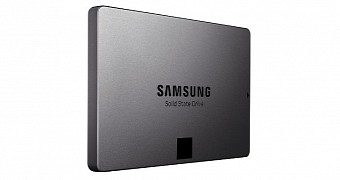Three-dimensional approaches seem to be the best way to go in regards to lots of things. 3D printing technology is the most obvious evidence of this, but Samsung has been doing something of the sort on the storage front for longer than consumer 3D printing has been around.
Sure, additive manufacturing has been in use for around three decades now, but consumer-grade 3D printers are a relatively recent development. They used to be more expensive than the holy grail before.
Thus, Samsung's 3D V-NAND solid state storage technology predates them by years. A technology that allows the company to cram more capacity than usual in solid state storage products.
The latest example of that technology, the newest application, is a chip with no fewer than 32 vertically stacked cell layers per NAND memory chip.
Those 32 layers, together, give the chip 128 Gb of memory storage, which is the same as 16 GB. That's right, you're looking at a 16 GB SSD no larger than your nail.
How the 3D V-NAND works
The Samsung V-NAND chip structure has all the cells electrically connected, using charge trap flash (CTF) technology, to a non-conductive layer.
With 32 layers of cell arrays, the 3-bit-per-cell storage device is actually a lot more efficient in power use, and can be made on less resources, and much quicker, as well.
Each cell array is placed right on top of the other, leading to chips with multiple billions of cells each (since each layer has loads of cells on its own).
Wafer productivity has essentially been doubled compared to planar 20nm Samsung 3-bit planar NAND. In layman’s terms, this means we could see very high-capacity SSDs and memory cards, not to mention flash drives, selling for the same prices as devices half their capacity.
It's a nice dream anyway. Samsung is bound to at least mildly overprice the resulting products compared to what they could be, but that's how things will always go in capitalism.
When we can expect products to show up
It's actually hard to say. Technically, there already should be some up for sale, especially since a prototype 850 Evo SSD was exhibited at the IFA 2014 trade show in early September, in Berlin, Germany.
However, since Samsung has only now introduced the NAND technology, it might take a few weeks for it to follow up. Although at least it will still happen before Christmas. Probably.

 14 DAY TRIAL //
14 DAY TRIAL //